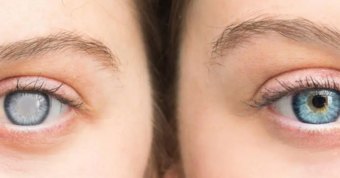Cataracts are a common eye condition that affects millions of people worldwide, particularly as they age. Understanding the causes, symptoms, and treatment options for cataracts is crucial for maintaining good eye health and quality of life.

Causes of Cataracts
Cataracts occur when the lens of the eye becomes cloudy, leading to blurred vision and other visual disturbances. The exact cause of cataracts is often related to aging and the natural degeneration of the lens over time. However, other factors that can increase the risk of developing cataracts include:
-
Ultraviolet (UV) Radiation: Prolonged exposure to UV radiation from sunlight can contribute to the development of cataracts.
-
Medical Conditions: Certain medical conditions such as diabetes, hypertension, and obesity may increase the risk of cataracts.
-
Smoking and Alcohol Consumption: Smoking and excessive alcohol consumption have been linked to an increased risk of cataract formation.
-
Genetics: A family history of cataracts may predispose individuals to develop the condition at a younger age.
Symptoms of Cataracts
The symptoms of cataracts can vary depending on the severity of the condition. Common symptoms include:
Blurred or Cloudy Vision: Cataracts can cause vision to become cloudy or blurry, making it difficult to see clearly, especially at night.
-
Sensitivity to Light: Individuals with cataracts may experience increased sensitivity to light and glare, particularly in bright sunlight or when driving at night.
-
Fading Colors: Colors may appear less vivid or faded to those with cataracts.
-
Difficulty Seeing at Night: Cataracts can make it challenging to see in low-light conditions, leading to difficulty driving or navigating in dimly lit environments.
When Surgery Is Necessary?
In the early stages, cataracts may not significantly impact vision and can often be managed with prescription glasses or contact lenses. However, as cataracts progress and begin to interfere with daily activities and quality of life, surgery may be recommended. Cataract surgery involves removing the cloudy lens and replacing it with an artificial lens implant.
Indications for cataract surgery include:
-
Significant Vision Impairment: If cataracts are significantly impacting vision and affecting daily activities such as reading, driving, or watching television, surgery may be necessary.
-
Increased Risk of Falls or Accidents: Cataracts can increase the risk of falls or accidents, especially in older adults, making surgery a viable option to improve safety and mobility.
-
Difficulty with Activities of Daily Living: Difficulty performing tasks such as cooking, cleaning, or personal grooming due to vision impairment may warrant consideration for surgery.
Conclusion
Cataracts are a common age-related eye condition that can significantly impact vision and quality of life if left untreated. Understanding the causes, symptoms, and treatment options for cataracts is essential for timely diagnosis and management. If you or a loved one is experiencing symptoms of cataracts, consult an eye care professional for a comprehensive eye examination and personalized treatment plan.




